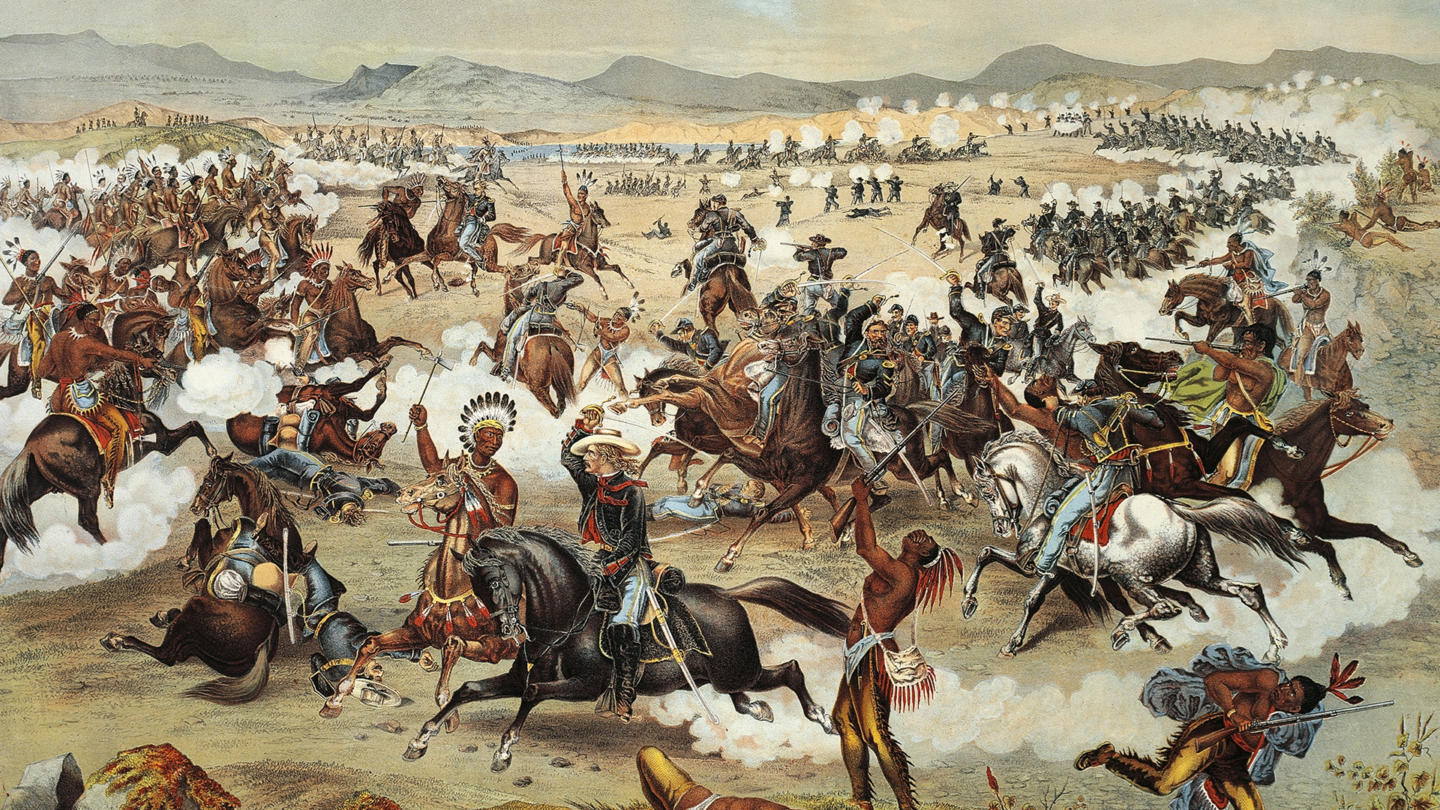The Battle of Little Bighorn

Known by Plains Indians as the Battle of the Greasy Grass, the Battle of Little Bighorn was an armed engagement between combined forces of the Lakota, Northern Cheyenne and Arapaho Indians against the 7th Cavalry Regiment of the United States Army.
Great Sioux War of 1876
Part of the Great Sioux War of 1876, the battle took place along the Little Bighorn River within the Crow Indian Reservation of the Montana Territory. On June 26th, the ensuing battle would prove to be an overwhelming victory for the Indians, as well as what would become known as Custer’s Last Stand.
Setting out on a Spring campaign to engage the Indians anywhere they could be found, Col. John Gibbon’s six companies left Fort Ellis in western Montana Territory on March 30th.
Intending to patrol the Yellowstone River.
Brig. Gen. George Crook’s ten companies moved north from Fort Fetterman in the Wyoming Territory on May 29th, marching toward the Powder River area, while Brigadier General Alfred Terry’s twelve companies departed westward from Fort Abraham Lincoln in the Dakota Territory.
Lt Col George Custer’s 12 companies and a gatling gun detachment departed westward from Fort Abraham Lincoln on May 17th, accompanied by teamsters and packers with 150 wagons and a large contingent of pack mules.
Custer’s Last Stand
At sunrise on June 25th, Custer’s scouts reported a massive pony herd near the Little Bighorn River, along with signs of an Indian village. Not wanting the Indians to flee before a fight, on the morning of June 26th, Custer decided to attack without waiting for re-enforcements.
With an impending sense of doom, Custer’s Crow Indian scout Half Yellow Face prophetically warned Custer that “You and I are going home today by a road we do not know.”
Expecting only around 800 belligerent warriors, Major Marcus Reno was first to attack the village, until his line was overrun by upwards of 2,000 warriors led by Crazy Horse and Chief Gall.
29 troopers were killed during the retreat, while another 15 men went missing. As for Custer’s bad day, the precise details are largely conjectural, since none of the American combatants would survive.
Later pieced together by Indian accounts, Custer’s force of 210 men had been engaged by the Lakota and Northern Cheyenne about 3.5 miles to the north of Reno’s fallback position. After the battle was over, troops came to recover the bodies, discovering that the dead soldiers had been stripped of their clothing and ritually mutilated.
The dead were hastily buried where they fell, while Custer’s body was discovered with two gunshot wounds—one to his left chest, and the other to his left temple. Some Lakota oral histories assert that Custer committed suicide to avoid capture and subsequent torture, though this is usually discounted by historians since the wounds were inconsistent with his known right-handedness.
